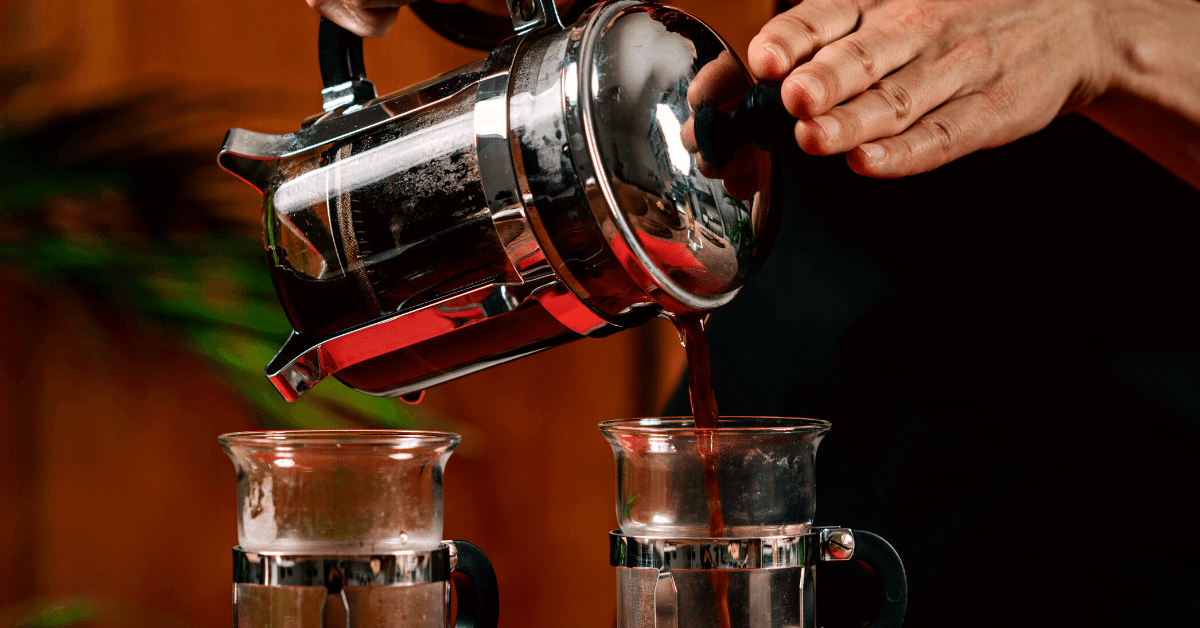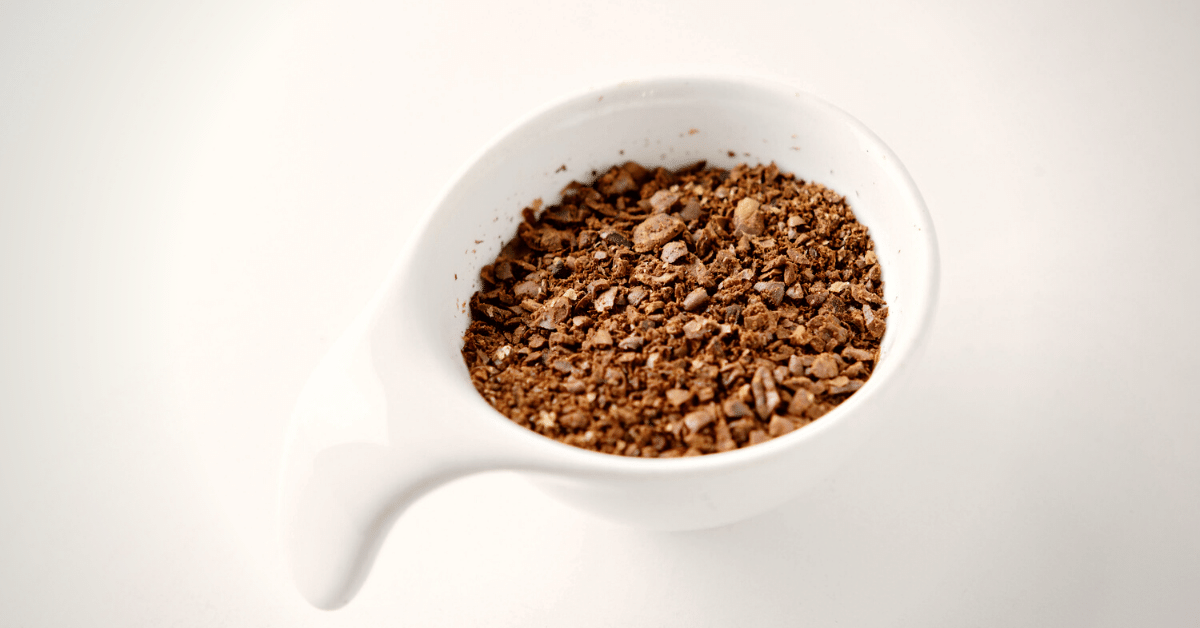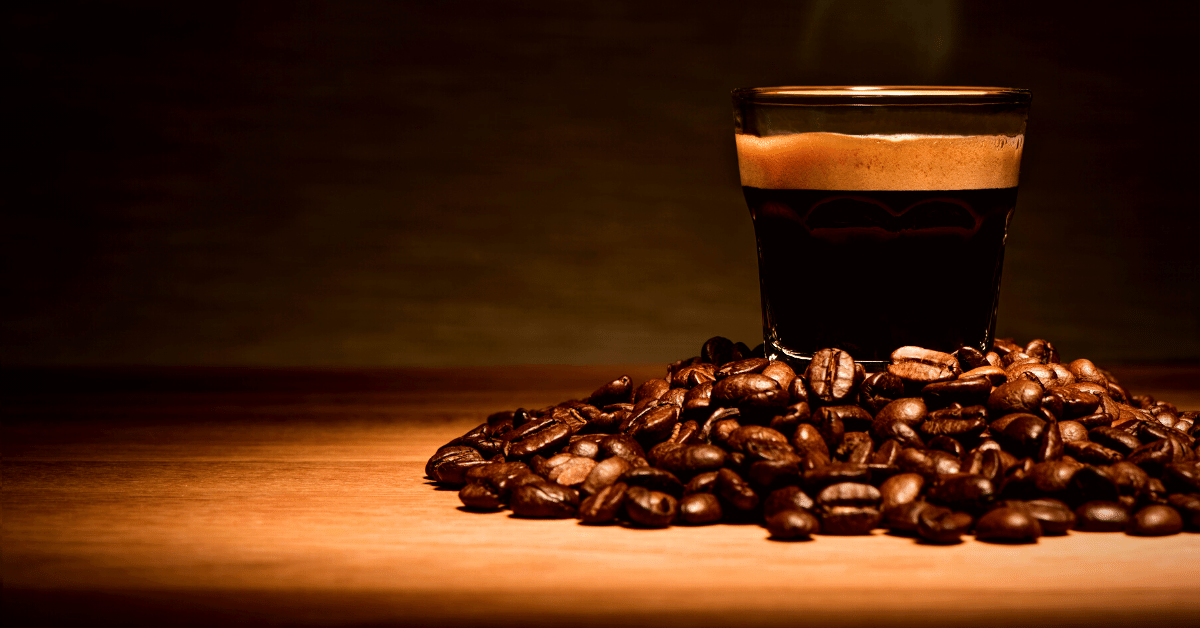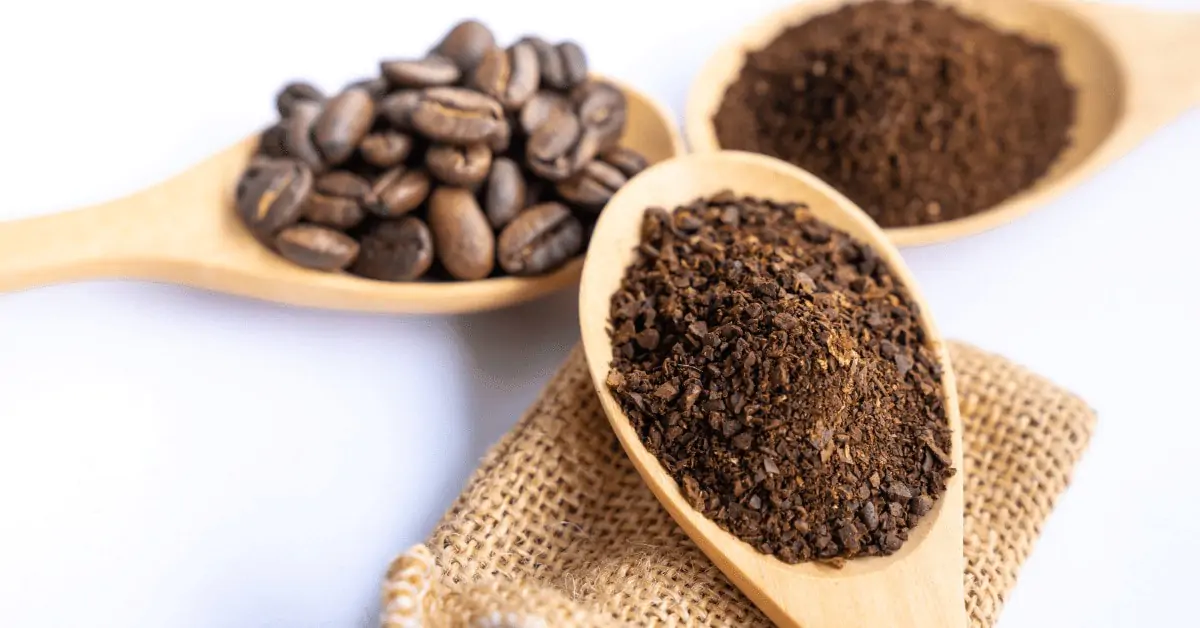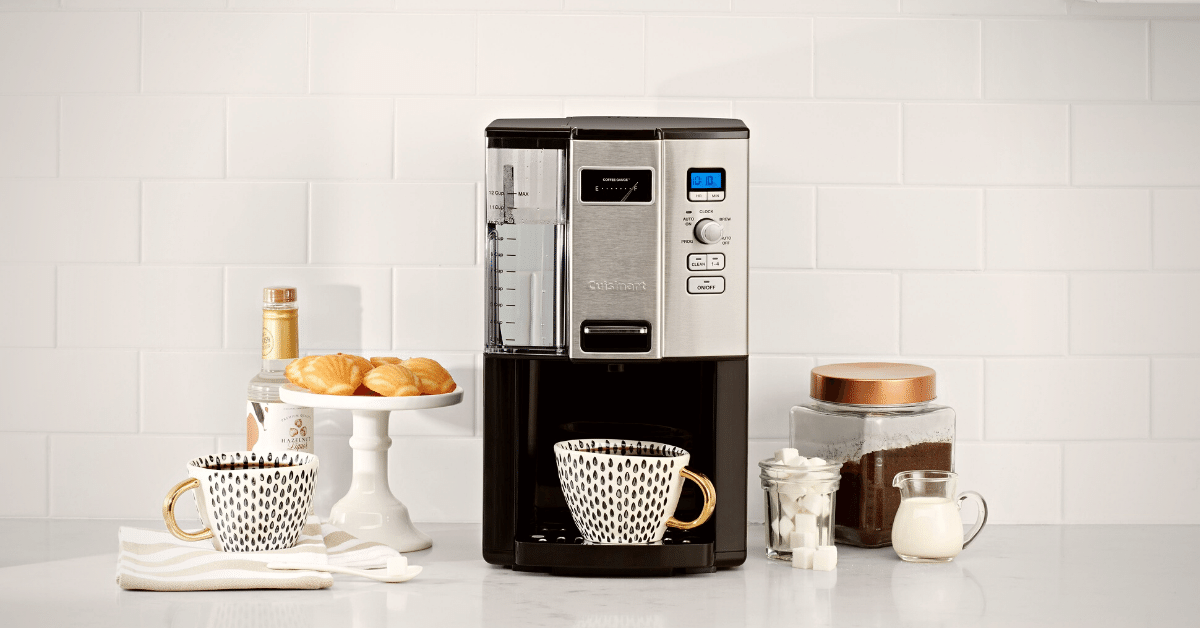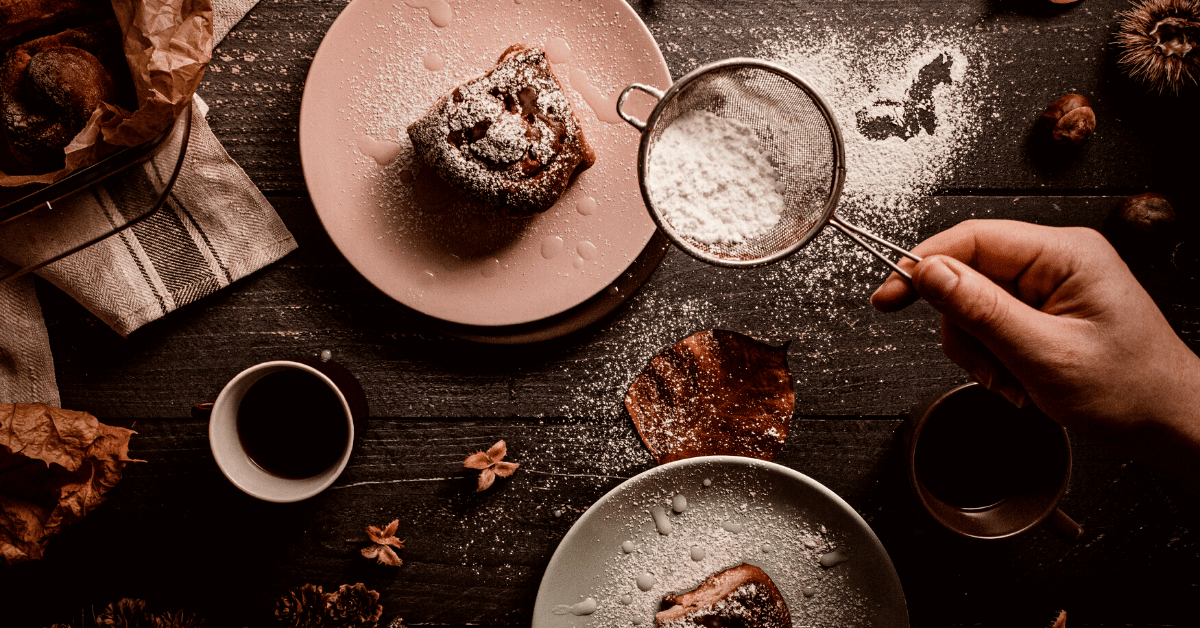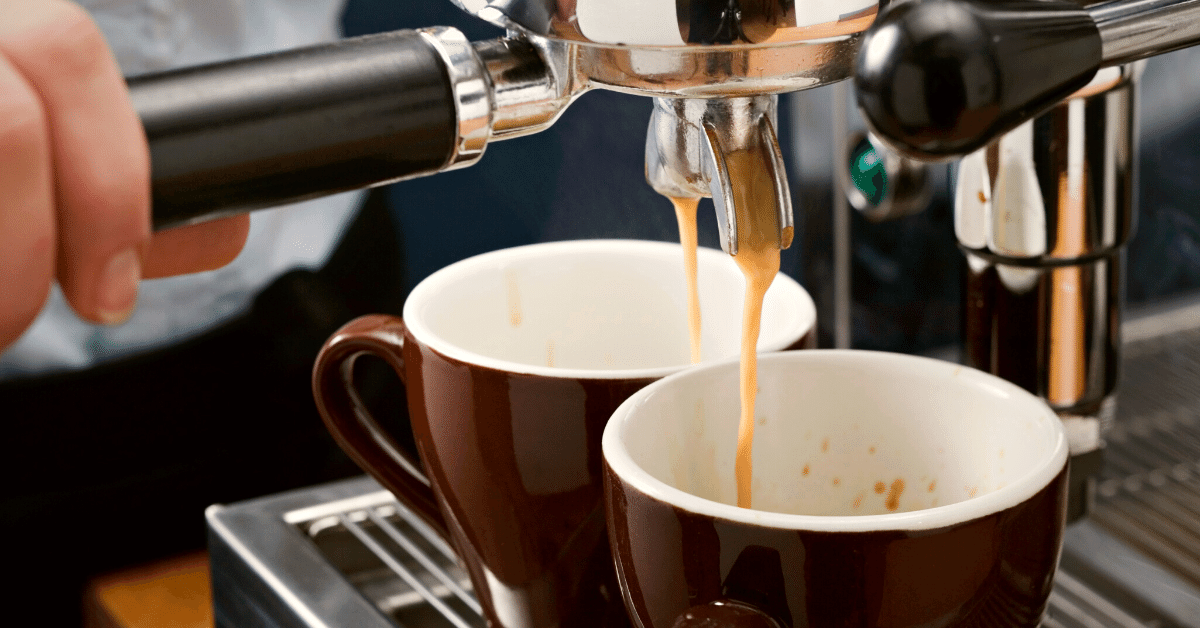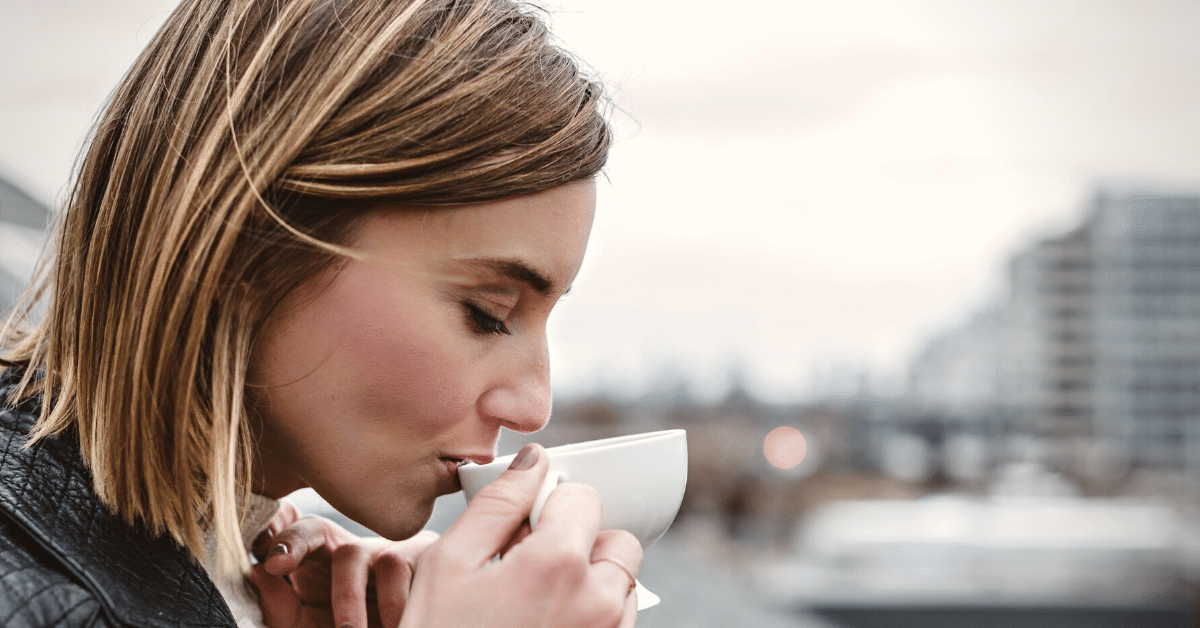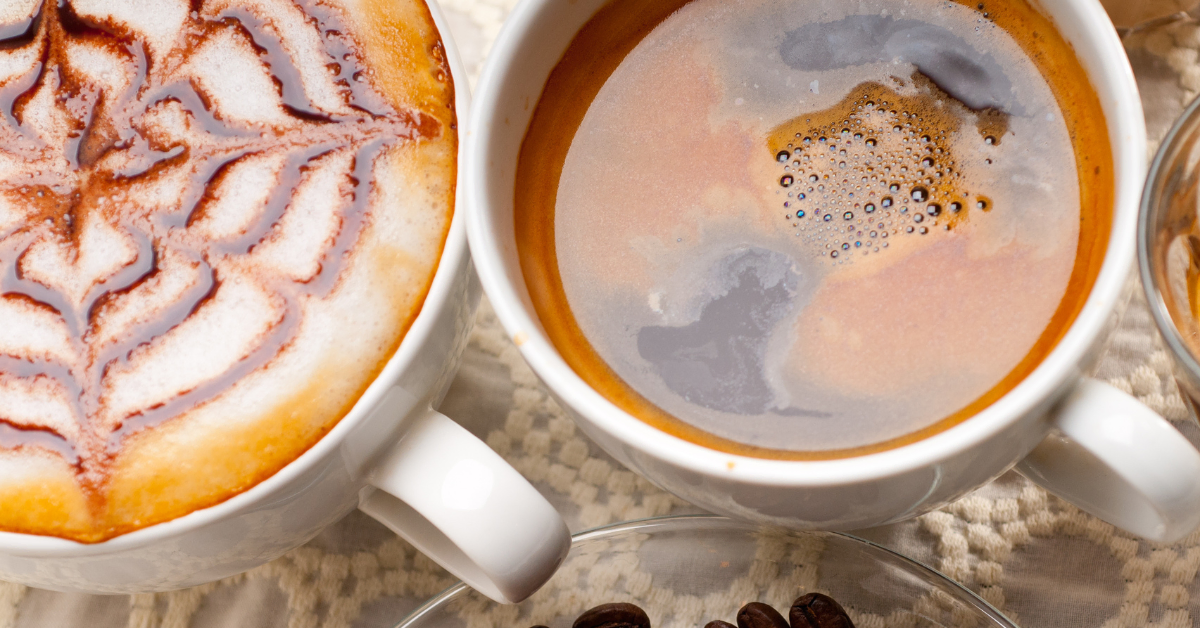I guarantee this James Hoffmann French Press recipe will be incredible.
How do I know?
Well, I use it every time I make a French Press!
And trust me, it’s the best French Press brew guide I’ve ever found.
So, let me break it down for you and explain why James came up with and uses each specific step.
Who is James Hoffmann?
You’d be forgiven for thinking that James Hoffmann is just a coffee influencer and YouTuber.
After all, he rose to mainstream fame after his YouTube channel’s success in recent years.
But there’s more to it than that. James has been around the coffee world for a long time. If you’ve been around coffee for the last fifteen years, chances are you’d heard of James before he started his YouTube channel.
Back in 2007, he won the World Barista Championship.
He started Square Mile Coffee Roaster and wrote The World Atlas of Coffee. He still works as a coffee consultant for new businesses.
So, yeah, James Hoffmann is a big deal in the coffee world beyond being just an influencer.
Is James Hoffmann’s French Press Different?
One thing that separates James from other barista influencers is his attention to detail.
He’s known for being meticulous in every topic he dives into. And his French Press recipe is no different.
You might be familiar with the standard French Press recipe:
- Fill the carafe with grounds
- Boil some water
- Fill the carafe with boiling water
- Wait 4-5 minutes
- Plunge all the way to the bottom
- Serve
And don’t get me wrong: that’s a fine way to brew.
But if you brew like this, I’m guessing you’re also familiar with the slit and sludge that comes with French Press coffee.
That’s the stuff at the bottom of your mug that gives your coffee a chewy texture.
James addresses this and other problems with his method.
Patience Is Key
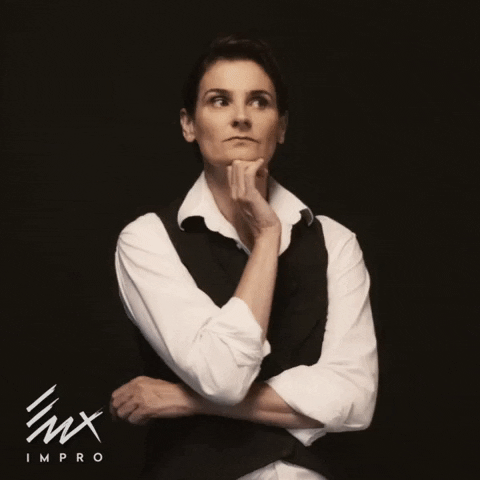
James preaches patience with his recipe. It takes a long time.
In total, his ultimate French Press technique takes 10-12 minutes to brew.
I know that sounds crazy, and I know that goes against a lot of traditional wisdom. But hear me out.
When professional coffee tasters sip coffee, they just fill up bowls with grinds and boiling water. And they don’t worry about the coffee being over-extracted. They also wait a long time before taking the first sip.
A French Press is pretty similar, so it makes sense to wait as long as professional coffee tasters wait.
You’ll need patience for truly delicious coffee.
Use Filtered Water
This might be obvious, but a lot of other recipes don’t talk about this.
For the best results, you should use filtered water. “Hard” water, or water with high mineral content, makes your coffee taste bland and off.
For reference, if your tap water tastes funny on its own, it will taste funny in coffee.
The solution is filtering your coffee. Just a standard water filter is fine. Or a refrigerator filter.
That will leave you with “soft” water, which is much tastier for making coffee.
Scoop The Foam
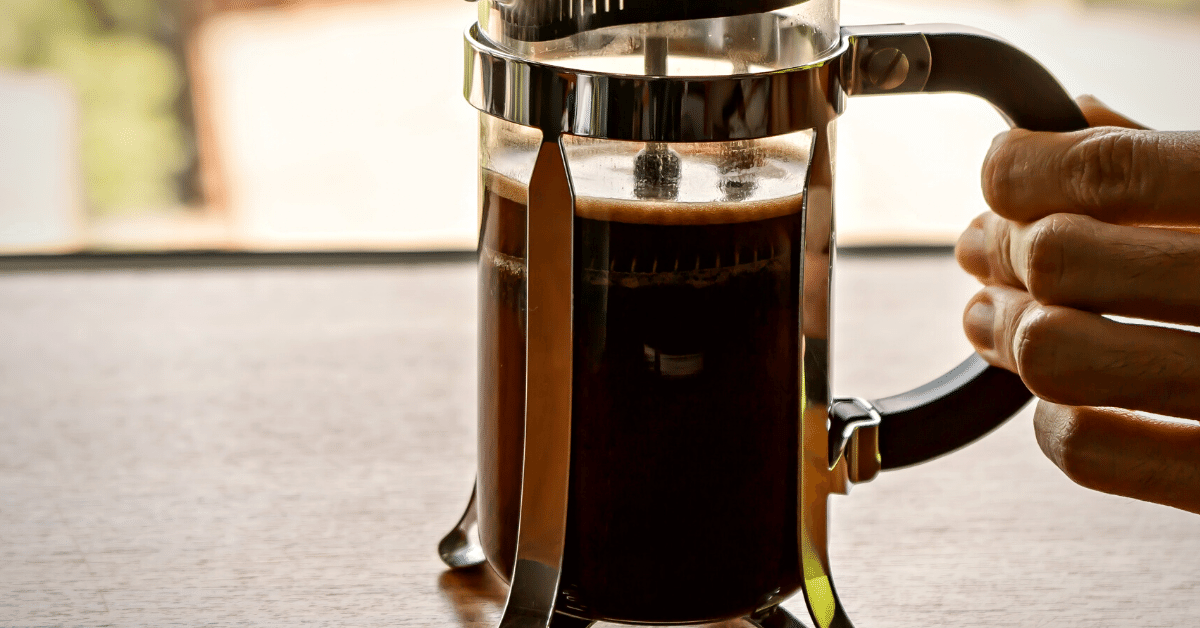
Okay, so when you get to it, you’ll need a couple of spoons handy.
After 4 minutes, use one to break the crust and help the grounds start to sink to the bottom.
There will be a thin layer of foam left on top. Use both spoons to gently scoop the foam off the top and toss it down the sink.
This takes all the grounds that won’t sink out of the brew, which cleans up the end result.
(Professional coffee tasters also scoop the foam off the top before they start tasting.)
Don’t Plunge the Plunger!
Okay, this is maybe the biggest difference between James’ recipe and most others.
He doesn’t plunge the plunger when the coffee is done brewing.
“But that’s the point of a French Press!” I hear you saying.
But think about it: when you plunge the plunger all the way down, it disrupts the grounds sitting at the bottom and sends them back into your coffee.
Then they end up in your cup.
If you leave them at the bottom of the French Press, then you can pour the brewed coffee from the top without any grounds getting into the mug.
The coffee plunger and filter act as a sieve for any straggling grounds.
James Hoffmann’s French Press Recipe
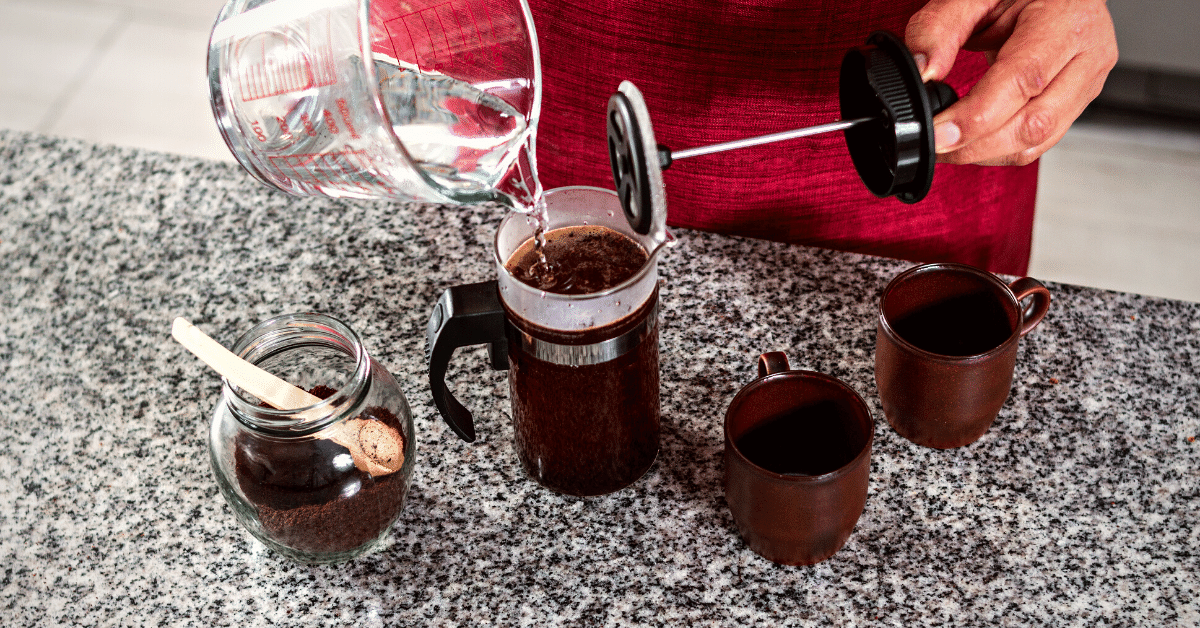
Those are all the basics out of the way.
It’s time to dive into the actual recipe.
Ingredients
First up, you’ll need to gather the ingredients.
But good news, there are only two!
- Filtered water. Filtered is important, a standard water filter or a refrigerator filter work just fine. Remember: if your tap water tastes off on its own, it’ll taste weird in your coffee.
- Fresh coffee grounds. That means your favorite coffee or a fancy treat from your local shop. Ideally, coffee beans should be ground medium to medium-coarse right before you start to brew. It could also mean a coffee chosen specifically for the French Press.
But that’s it, that’s all you need to start brewing coffee with a French Press.
Equipment
The equipment James uses is a little more intense than you might find in other recipes. That’s just his attention to detail.
- French Press. This one is pretty straightforward. You need a French Press coffee maker. To follow this recipe exactly, you’ll need a 6-8 cup French Press.
- Kettle. For boiling water. It really doesn’t matter if this is electric, gooseneck, or stovetop. If it boils water, it will work.
- Kitchen scale. Don’t skip the scale! It’s important for keeping your ratios right and will help you stay consistent when you brew another cup tomorrow. Make sure it reads in grams.
- Two spoons. These are for breaking the crust and scooping off the foam. Any old spoons will work just fine.
The scale is most important. Getting a scale is a must if you want to dial in your brews.
Scales keep you consistent from brew to brew. They allow you to understand where you went wrong and where you might need to change. And they allow you to repeat parameters for another great brew.
Instructions
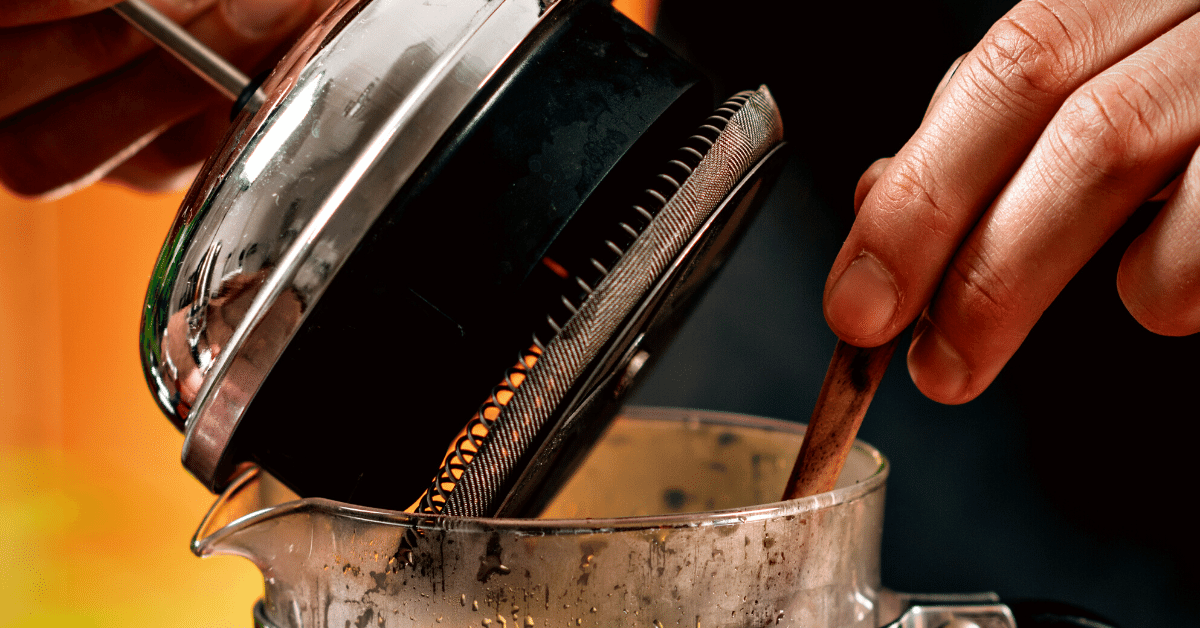
Alright, let’s brew!
- Set water to boil. Make sure you have at least 500 grams.
- Measure out and grind 30 grams of ground coffee. Your grind size should be medium to medium coarse.
- Put the grounds in the carafe and place the carafe on the scale. Don’t forget to zero your scale!
- Once the water is boiling, pour 500 grams of water into the carafe. The pour isn’t important. Just fill the carafe with 500 grams of hot water.
- Wait 4 minutes.
- Break the crust. Take one of the spoons and break the crust that forms at the top of the carafe.
- Scoop off the foam. Use both spoons to scoop off the remaining foam once you break the crust. Discard the foam in the sink, you don’t need it anymore.
- Wait 8-10 minutes. This is where your patience comes in. The longer you wait (up to about 10 minutes), the better your coffee will taste. Trust James on this one, and at least try it!
- Insert the plunger (but don’t plunge). Just rest the plunger on top of the coffee.
- Pour and enjoy!
Pro Tips
If you find you like this brewing method and want to experiment, there are a few things you can try to take your French Press game to the next level.
- Use a timer. You might already be doing this, but using a timer is another way to take more control over your brew. Each step of your brew gives you more variables to control and makes it easier to repeat and change in the future.
- Check your boiling temperature. Coffee brews best at 195-205 degrees Fahrenheit. But at sea level, water boils at 212 degrees. But where I was a barista in Denver, Colorado, at a significant elevation, our boiling point was 202 degrees. Waiting for your water to be at an ideal temperature will even out your coffee extraction and make brewing more consistent.
- Try different coffees. One of the joys of brewing with more precision is the possibility to develop your palate. Once you have your parameters dialed in, try out some different coffees! You might start to taste the difference between roasts, origins, and regions!
Conclusion
James Hoffmann is an accomplished barista, YouTuber, author, and coffee consultant.
He’s worth listening to.
This meticulous and detailed French Press will give you a great coffee every time. Just make sure to follow the little steps!
Want more of James Hoffmann’s brewing guides? Check out his awesome Aeropress recipe.

